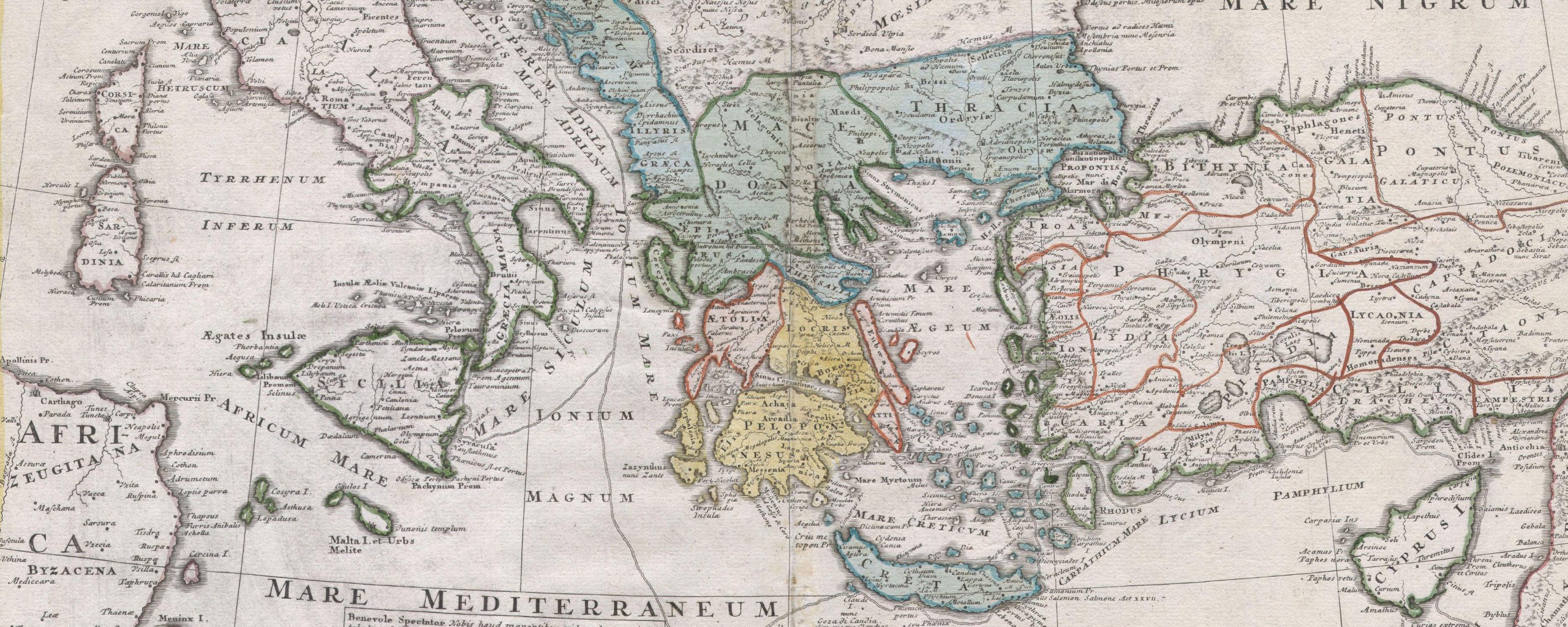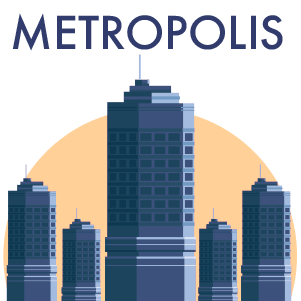

Early on in Daniel Quinn’s charming and unusual novel Ishmael, the eponymous teacher–who also happens to be a gorilla–explains to the narrator that all of human culture is founded on an unacknowledged creation myth: that every moment of history, from the Big Bang through the formation of our planet and all subsequent stages of evolution, crystallized in the appearance of humankind.
The point in saying this (besides promoting a book I admire) is to suggest that the nation-state–really, the entire global community of nations–follows the same logic: Its formation is something we see when looking backward from the present moment as a sure, unquestioned outcome. In fact, it was only one choice out of many–one possible answer to the question of how we should organize human society into geopolitical entities, which will undoubtedly give way to others in time.
The alternatives we’re moving toward, I’d like to suggest, will for many reasons bear more than a passing resemblance to what we’ve already seen–cities emerging as the most salient unit of physical and political organization; self-governing, economically independent, and culturally unique.
In short, we’re due for the rebirth of the city-state.

Taking the long view, nation-states are a recent invention in human history. To summarize the bulk of an undergraduate politics module in a sentence or two, nation-states as we know them were directly preceded by kingdoms and empires that spanned large geographic territories and encompassed various cultural and ethnic groups who, while recognizing themselves as subjects of the empire, did not share a sense of collective identity. With the nation-state came formal borders, centralized administration, a unified economy, and in cultural terms a sense of “nationhood.” The idea–albeit contested, even today–was that the citizens of the state constituted one people.
Yet for millennia before that, the political geography of human civilization was dominated by a smaller unit of organization. Those were urban settlements with a self-governing political structure and sovereign authority inside their borders, a version of what we now know as city-states.
Thousands of years later, the names of some of these early city-states are still part of our cultural memory: Babylon and Ur in Mesopotamia; Tyre in ancient Lebanon; Athens and Sparta in classical Greece. In more recent times, Venice in the Middle Ages was one of many city-states in Italy, while the “free imperial cities” of the Holy Roman Empire were also self-governing entities. (As a side note, being a free or autonomous city in this sense doesn’t imply total separation from other political entities, but rather a robust internal leadership that supersedes rule from outside–more on that later.)
Of course, we don’t have to delve into the past to see city-states in action. Today, Singapore, Monaco, and the Vatican are fully independent city-states, whereas others such as Hong Kong, Macau, and Dubai are part of larger nations but function independently.
For the most part though, modern metropolises like London, Paris, Tokyo, Delhi, and Shanghai are simultaneously global and still strongly tied to their national context. Thirty years ago, the acclaimed urban theorist John Friedmann described the dual positioning of such urban powerhouses in a short but highly influential article titled “The World City Hypothesis.” Outlining his position, he wrote:
“The world city hypothesis is about the spatial organization of the new international division of labour. As such, it concerns the contradictory relations between production in the era of global management and the political determination of territorial interests.”
The article was part of a new wave of scholarship that considered cities not just as territories in physical space, but also as nodes in a global web of capital exchange that forged tight links between points on opposite sides of the planet.
I talked to Dr. Alex Rhys-Taylor, lecturer in urban sociology at Goldsmiths University and–full disclosure–a tutor under whom I once studied, to understand how the tension between global cities and national borders continues to play out in our economic system today.
“[Modern capitalism] needs arbitrage: It needs different markets around the world at which goods can be bought and sold for different prices,” Rhys-Taylor said. “What the nation-state does at present is to have regulatory and political frameworks that produce different markets in different locations, which enables the accumulation of profits through selling between different markets. At a crude economic level, transnational neoliberalism, which in many ways is eviscerating sovereignty, national identity, and culture, also needs nation-states to maintain differential markets.”
So the same forces that push cities into prominence also shore up the nation-state to a degree, as ties from global hub cities hold borders in a strained but stable tension, like the spokes of a bicycle wheel. But city-states and national boundaries can coexist, as historical example shows: In the 15th””19th centuries, trade along the northern coast of Europe was dominated by the Hanseatic League, a sophisticated commercial network of almost 200 cities in what are now 16 countries, which included pacts for mutual defense against interference by rival powers.
Besides the uneasy truces capitalism offers, what other factors might push cities across the globe to start functioning in a more self-reliant way? One answer is simple: a coming change in the price, availability, and source of energy.

Anyone old enough to be reading these words has lived through an unprecedented era of cheap, fossil fuel-driven transport. Like the rest of the carbon economy, this has been made possible by market signals that fail to account for the negative externalities of greenhouse gas production.
In order to avoid a climate catastrophe–which, sadly, is far from a sure thing–carbon emissions will inevitably have to be taxed at something approximating their true cost. This will leave two options with regard to transport: option A, in which we discover a new high-speed/low-carbon propulsion system, or option B, in which a few hours of airline flight costs a few months’ salary. In the first scenario, we’d carry on with little change; in the second, we’d lose the luxury of jetting halfway around the world without a seriously good reason.
While our ability to transport ourselves would be reduced, advances in communications technology will make it easier than ever to interact with one another at a distance, moving far beyond a glitchy Skype call and deep into the realm of haptic interaction. Objects in virtual reality will feel physically real–yet another reason to never leave our city, or maybe even our homes.
A change in how cities buy and/or produce energy is also underway. In America, large metro areas are beginning to take greater control over their energy investments, putting larger sums of money toward shifting the locus of energy generation closer to home. (For additional background, an article published here under last month’s energy theme, by Mimi Onuoha, takes an intriguing look at the complex dance of energy purchasing and distribution in New York.)
Taken together, these trends point to a picture of the city as a more insular ecosystem than we’re used to experiencing–on a physical level at least–where we’ll try to keep as many urban life support systems inside it as possible.
At the same time that global warming makes it harder to justify shipping goods over long distances, a revolution in the way we produce them in the first place is just around the corner–ushered in by the likes of Flashforge, RepRap, and MakerBot.
If you don’t recognize these names, then you’re not familiar with 3D printing–yet. Within the next decade, you won’t be able to escape them. The rapid development of affordable, consumer-grade 3D printing has such potential to upend conventional manufacturing practice that former Wired editor Chris Anderson labeled it “the next industrial revolution.” It’s a revolution in which we will all be capable of creating physical objects on demand–using raw materials, digital blueprints, and just a few mouse clicks–almost anywhere. It really is like something straight out of a science-fiction film.
Building daily-use objects in our own homes, claimed Anderson in a talk he gave as part of the Long Now Foundation’s seminar series, will “reverse the arrow of globalization,” halting the constant search for lower labor costs involved in the race-to-the-bottom of outsourced manufacturing, and bring in a renaissance of small-batch fabrication. Like local energy production, it will also steer cities toward self-sufficiency, as the convenience of either making goods yourself or obtaining them from a fabbing workshop across town will outweigh the cost of shipping them in from elsewhere.
If the above turns out to be true, the effects of the shift will run deeper than just the way we physically organize our cities. To borrow from the always-relevant doctrine of Karl Marx, a change in the dominant mode of production that underpins a society will inevitably alter the social structure itself, giving birth to new forms of social relations while sweeping aside the old.
CEO of the robotics and 3D-printing company Robosavvy, Limor Schweitzer (whom I called to get a second opinion on Anderson’s grand vision), echoed the sentiment that a change is coming. Schweitzer, though, is actually more skeptical that 3D printing will replace mass production any time soon. “It’s one of those things that mostly sounds like a nice idea, like eating local food,” he said. Instead, he thinks profound changes are likely to come with automation of the workforce, which will afford us the free time to become more engaged citizens:
“When you have more people who are educated and don’t have to do mundane and routine daily work in order to survive, there’s a lot of time to think about shared spaces and efficiency of government. Our current systems aren’t fit for modern purpose and they won’t last, especially when we have more automation, and people have more time to define their ideas for how they want to live in harmony with other people.”

The idea of a self-contained city with a politically active citizenry makes me think of the etymological root of “politics,” the Greek word polis. In some senses it translates as “city-state,” but that includes the physical structure of the city, the democratic spaces of participation (e.g., the agora, or central square where people met to do business or debate politics), and the people themselves. Considering how low voter turnout is at the moment in most of the Western world, a return to participatory politics would be a significant change for the better.
This kind of powerful–but unspectacular–break with the present might not be as glamorous as the flying megalopolises of science fiction (sorry, Star Wars fans), but it’s more likely to be a realistic idea of how future cities will look. For the next few hundred years it’s improbable that we’ll see the death of the nation-state altogether, but the power of cities both large and small is in the ascendant, and they will almost certainly move closer to self-governance.
Initiatives like the C40 Climate Leadership Group already show key cities breaking away from nations in terms of pushing for action on climate change and low-carbon innovation. The city-state may prove to be a better fit for energy efficiency than the sprawling republic. What’s important to recognize is that we’re at a point of branching possibilities insofar as these outcomes are concerned, and that we as citizens have the power to shape the course we take.
“One way or another, we’re going to end up with a collection of city-states or clusters of megacities,” Rhys-Taylor told me. “But how they’re arranged in relationship to one another–whether it’s a hierarchy or a meshwork–really depends on the political framework through which they evolve.”
“It’s a tough one to call, though,” he added. “We’re in interesting times at the moment.”


How We Get To Next was a magazine that explored the future of science, technology, and culture from 2014 to 2019. This article is part of our Metropolis section, on the way cities influence new ideas–and how new ideas change city life. Click the logo to read more.
